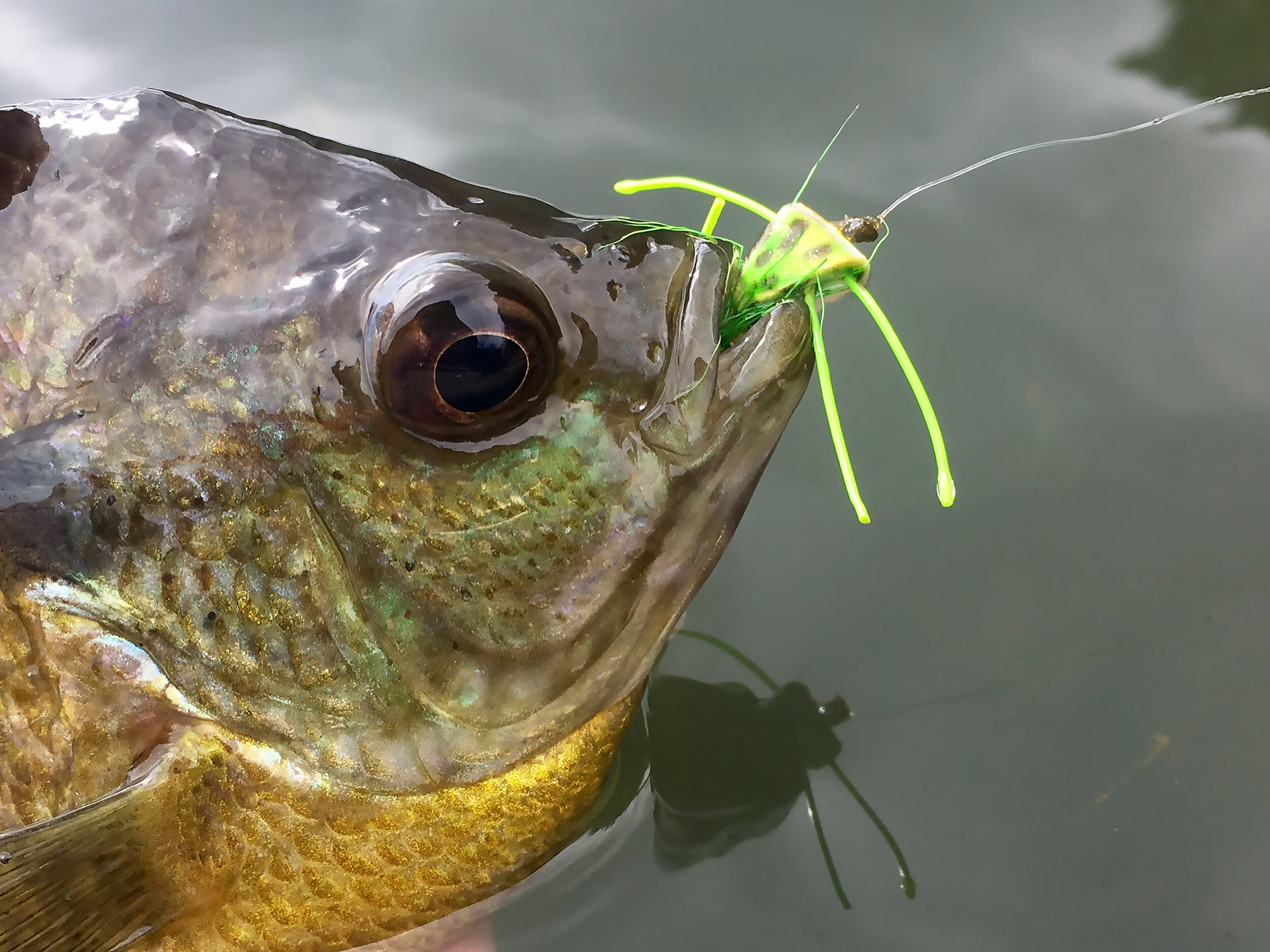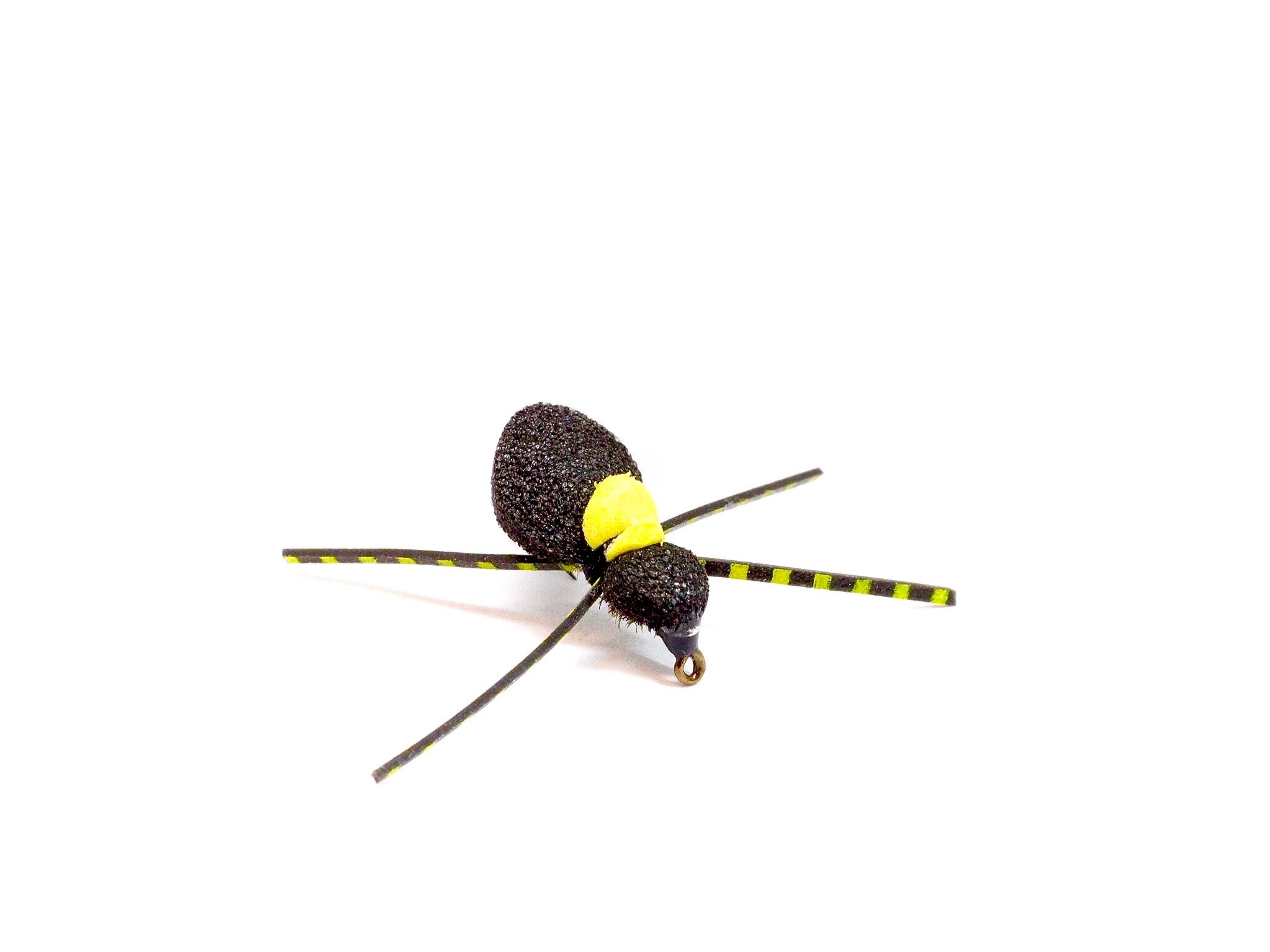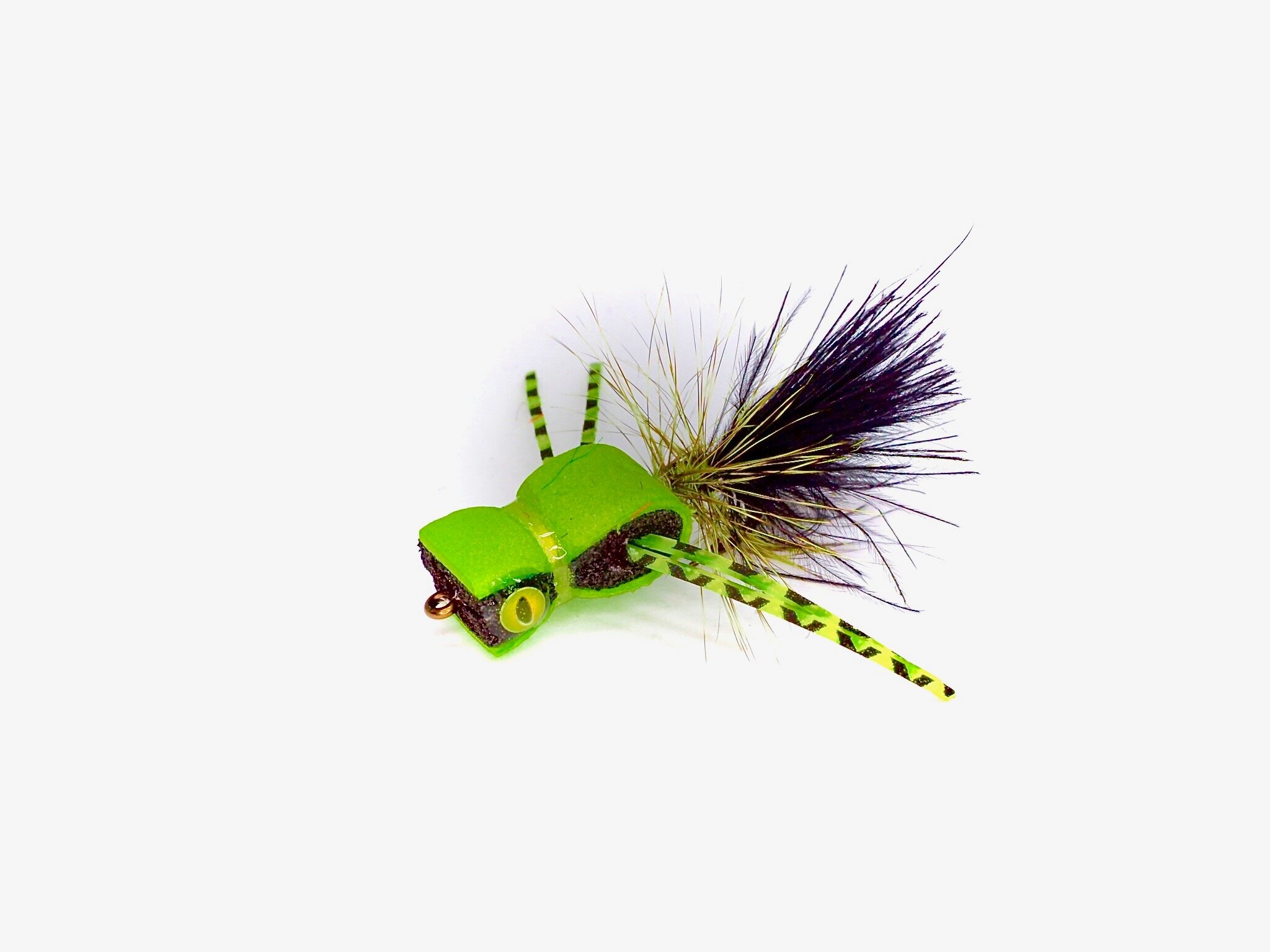Sheets of inexpensive closed-cell foam have long been used for fly tying. This versatile material can be found everywhere and can be used to create an endless variety of flies and bugs for warm water fly fishing. Foam sheets can be found in local craft and variety stores, even your neighborhood Walmart carries the stuff. Of course, your local fly shop will carry sheet foam as well but often with an inflated price tag.
Sheet foam is inexpensive, comes in a variety of colors and is easy to work with.
Foam is foam…right?
Is there a difference between the foam you see marketed as “fly foam” in your local fly shop and the stuff you find in the isles of your local craft store or Walmart? In some cases, yes, but that does not justify the exorbitant prices! The foam I have picked up in fly shops over the years seems to be denser and a little more durable than most of the stuff found in craft stores. That being said, craft store foam will work just fine for your fly tying needs. One benefit of patronizing your local fly shops is you can also find foam of varying thickness from 1mm sheets of Razor Foam to big blocks used for popper bodies. In addition, the only way we can keep these places around is to spend a little money in them from time to time! However, if you spend some time looking around, you can also find these products locally without the fly shop prices.
All foam sheets are not created equal, but most will work just fine for your fly tying needs. I did not pay much attention to the differences until I started mass producing bodies for my Triangle Bug pattern. Some foam sheets (denser ones) cut better than others, and sometimes one particular color performed better than others. I am not sure if this is a result of the dying or manufacturing process. If you look through the stacks of foam in your local craft store, you will see the differences for yourself. Over time I have learned to pick out foam sheets that suit my needs as a fly tier. But I’m splitting hairs here. You are not likely to be mass-producing foam bodies like me, so any old sheet of foam will get the job done in most cases!
Tips for Fly Tying With Foam
Before I get into some of my favorite foam flies for warm water, I’d like to mention a few things that make your fly tying go a little smoother when working with this great material.
Certain threads work betters than others when it comes to foam. I prefer a thread that can be flattened out to reduce the possibility of cutting the foam.
Thread: All thread is not created equal when working with foam. I prefer a thread that can be flattened like UTC or Danville and tend to stay away from a corded thread like Uni. By untwisting the thread, you flatten it increasing its surface area and reducing the potential for the thread to slice through the foam. Fine corded threads can cut through thin foam like a hot knife through butter. If you don’t have a thread that will flatten you can reduce this risk by using heavier thread. Fortunately, when tying warm water flies, we are not as concerned about bulky thread build up like we are when tying trout flies. In many cases, you can get away with heavier thread. The heavier thread has other benefits besides not cutting through the foam. A heavier thread will allow you to compress the foam easier and with fewer thread wraps. The thread will not break as easy when applying the tension necessary to do this.
Thread Control: When working with foam, the proper use of thread tension is essential. At times light thread tension is needed to softly compress the foam, increasing the pressure with subsequent wraps. This gently coaxes the foam into position without cutting or distorting it.
My well used glue holder prevents a lot of headaches when working with super glue.
Use of Glue: Superglue (Cyanoacrylate adhesive) and glues designed explicitly for foam are very useful in fly tying. Superglue works well for fusing pieces of foam together and setting various components of the fly in place. Both thin liquid types of glue and gels have their uses when fly tying with foam. When creating stacked foam bodies made of different colors of foam, I will use a glue designed specifically for foam. It is easier to apply over a large surface and dries a little slower. I find it easier to glue entire sheets of foam together then cut them to shape rather than layering the foam on the fly. If you are not tying dozens of flies at a time, it may make more sense to eliminate this step and just stack your foam on the fly as you build it. I prefer to use super glue that comes in a bottle with a brush applicator when working with foam. I use so much of the stuff I had a friend of mine make me a wooden holder that prevents the bottle from tipping over (which makes an awful mess) and allows me to open and close it with one hand. This holder was once a beautiful looking accessory on my fly tying desk, but it looks pretty gnarly these days as it is covered with dried specks of super glue!
Choosing The Right Foam: As I mentioned earlier, all foam is not created equal. Look for foam that is dense and harder to compress. This type of foam will produce a better floating, more durable flies.
Use a good quality cutting mat when cutting foam.
Cutting Foam: A quality cutting mat is essential for cutting out foam shapes for fly tying. I use a large one on the surface of my fly tying desk. In addition, I often use custom foam cutters to create different shapes for fly tying. The foam cutters made by River Road Creations are the best in my opinion and they have a wide variety of shapes and sizes available. Look for the foam cutters I use to start popping up in the store. I have received a lot of requests for them and have custom ordered them in the past, but I plan on keeping the cutters I use on a regular basis in stock If your looking for something particular drop me a line and I can get you are looking for.
The Flies:
I have written a lot about these patterns in the past. The buttons under each pattern will take you to past articles if you would like to learn more about the flies, how to fish them, how to tie them, and the materials list if you want to tie them yourself.
The Triangle Bug
My number one foam pattern is my Triangle Bug. I have fished this fly for decades, and it is hands down my top producer. The unique shape of this fly prevents the small-mouthed bluegill from taking the fly too deeply. The unique hook I tie this fly on eliminates the possibility of the body rotating on the hook shank and interfering with the hook gap, a real problem with a fly shaped like this! Simple foam sheets are used for the body of this fly. The only tricky part is getting the dimensions of the body right. Since everyone has different preferences in hooks, it is difficult for me to give you a standard dimension for the body. If your tying the pattern on my Triangle Bug hooks, the precut shapes available on the website are perfectly sized for that particular hook.
Jack Garside’s classic Gurgler pattern with a few variations to make it a great fly for all warm water fish.
The Warm Water Gurgler
The Warm Water gurgler is an example of a stacked foam fly. Two layers of foam create the body on this fly. It can be tied in a variety of sizes to target everything from panfish to pike. For larger sizes, I increase the thickness of the foam to create a larger body. This variation of Jack Gartside’s classic Gurgler is a staple in my warm water fly boxes
The Warm Water Gurgler brings big bluegills to the surface every time!
The Micro Gurgler as a fantastic topwater pattern for all species of panfish!
The Micro Gurgler
The Micro Gurgler is another variation of the classic Gurgler. This pint-sized version is perfect for bluegills and other species of panfish. It is quick and easy to tie, and fish can’t resist it! I tie it in a variety of colors. For darker flies that are difficult to see on the surface of the water, I add an additional layer of Hi-Viz razor foam on the head. This “indicator” makes the fly very easy to see even at distance.
Adding a brightly colored “indicator” to dark flies like this black Micro Gurgler makes it easy for the angler to see them on the water.
The Classic Foam Spider
Whether a slow sinking pattern tied with open-cell foam or a high floating topwater bug, foam spiders have been a staple in the fly boxes of warm water anglers for decades. While often tied with molded foam bodies, a great looking foam spider can be tied with sheet foam. Look for an upcoming blog post on how I create these simple to tie, great looking flies. Until then, if you want to check them out, they are now available in the shop.
Sheet foam can be used to create great looking poppers for panfish and bass as seen here in this Folded Foam Popper!
The Folded Foam Popper
The Folded Foam Popper will also be the subject of a future blog post. By using this folded foam method and utilizing different thicknesses of foam, you can create a great looking, top performing popper without buying preformed popper heads or shaping your own! Size the foam is on both sides of the hook shank like the Triangle Bug, Triangle bug hooks are perfect for panfish size versions of this pattern since it will prevent the body from rotating on the hook shank. On larger versions of this pattern, I have a method of accomplishing the same thing without the use of a specialized hook, but you will have to wait for the blog post to learn about that! If you want to see one right away check out the shop!
The list of patterns that I tie with sheet foam goes on and on. I could probably fill a book with them (that’s a good idea!). I will share more foam patterns with you as we move through this winter’s fly tying season. If you have a foam fly, you would like to share. I would love to see it. If you want to share it with our readers, shoot me an email. We are always looking for patterns to share as part of our Fly Tying Friday feature.












